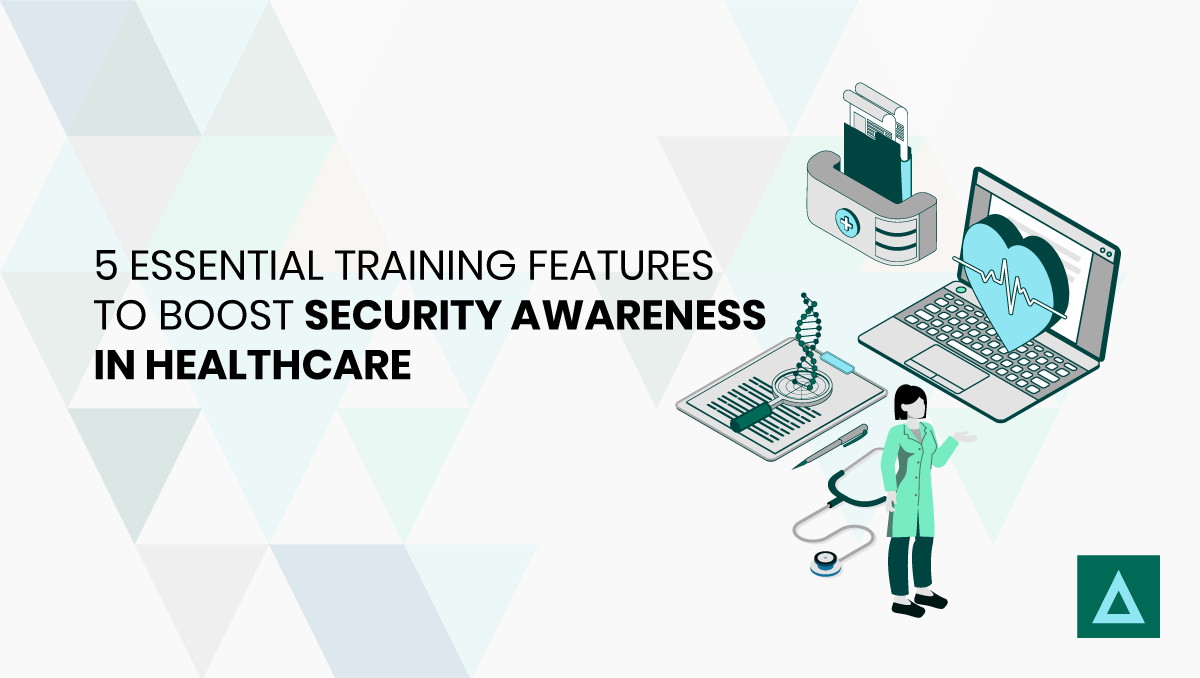Cybercriminals are always on the hunt for sectors and industries that are particularly vulnerable to their attacks. From high-stress situations to valuable data, anything that might increase their chances of success or create higher potential rewards is highly sought after on the dark web.
The healthcare industry fits the bill perfectly, with its sensitive data and high-pressure environments.
That’s why hospitals and clinics have become prime targets for phishing, ransomware, and third-party attacks. The combination of valuable data and the fast-paced nature of healthcare makes it an attractive target for cybercriminals.
Over the last four years, the healthcare sector has seen a staggering 239% increase in large breaches involving hacking. To combat this growing threat, healthcare organizations need cybersecurity awareness training programs specifically designed for their unique challenges.
This article will outline the five pillars of an impactful cybersecurity awareness training program that fulfills the specific needs of the healthcare industry.
1. Tailored Content for Healthcare Industry Challenges
The healthcare industry faces distinct cybersecurity challenges that require tailored user training. Unlike typical office environments, healthcare workers deal with sensitive data, high-stakes decisions, and a variety of medical devices—all of which demand a specialized approach to security awareness.
Generic training modules tend to focus on securing traditional workspaces and overlook the intense, high-pressure situations healthcare professionals navigate daily. Furthermore, healthcare security training must account for regulations like HIPAA and PIPEDA, which directly influence day-to-day practices.
Phishing modules, for example, benefit from real-world healthcare-specific examples, as these scams often differ significantly from typical phishing attempts. Additionally, training needs to include securing IoT medical devices, which are integral to patient care and highly vulnerable to cyber threats.
2. Engaging and Interactive Training Modules
Healthcare organizations are fast-paced, hectic environments where traditional sit-down courses or desktop-based training can be helpful, but they can't be the only way to deliver cybersecurity content.
With most healthcare workers lacking personal workstations, training modules need to be accessible on mobile devices, allowing staff to engage with content on the go. Keeping each section short ensures it fits into their busy schedules, giving them the flexibility to learn when they have a moment.
Gamification can also significantly boost engagement. Hospital teams often form tight-knit groups due to the challenges they face together, making leaderboards and interactive contests ideal for fostering friendly competition and enhancing knowledge retention.
3. Regular Updates and Current Content
Prevalent healthcare threats like ransomware are in constant evolution, with a new variant popping up seemingly every week. This situation highlights the need for constant, regularly updated training modules to keep users aware of the recent trends in cyber threats.
Short, regular training allows you to cover new threats as they appear and keeps users engaged and interested. One of the most common issues with cybersecurity training is that users can’t relate to the content. If your lessons cover recent threats, your users will feel more connected to the subject matter.
4. Scalability and Customizability
Healthcare is diverse, and your security awareness training program should be, too. Different departments, from high-pressure emergency rooms to administrative offices, face unique cybersecurity challenges. Your SAT program must be adaptable and scalable to address these varied needs.
Tailor your training to fit the specific contours of your organization. Whether you're a small clinic or a large hospital, your SAT solution should evolve with emerging threats, ensuring your defenses remain strong and responsive.
5. Analytics and Reporting Capabilities
While customized training can help, statistical analysis is even more important to accurately understand the training's impact. Your training results provide a clear view of each lesson's payoff and an understanding of each department's different needs.
Tracking metrics like training completion rate, phishing simulation clicks, and quiz scores is essential to understanding the needs of each department. Monitoring this data will also allow you to fine-tune your training for the different situations of each employee group within your organization.
Building Resilient Healthcare Systems Through Strategic Cybersecurity Training
In healthcare, the focus is understandably on patient care, which can sometimes push cybersecurity to the background. It’s essential to highlight that protecting patient data is just as vital to their well-being as the hands-on care provided, making cybersecurity an integral part of daily responsibilities.
Instilling safe online habits takes time. When cybersecurity practices are clearly introduced and seamlessly integrated into daily workflows without adding extra burden, employees are more likely to adopt them over time.
Want to ensure your team is prepared? Download our eBook to discover what healthcare-specific cybersecurity training should include, common industry threats, lessons from recent breaches, and how to integrate security into your organization’s culture.
